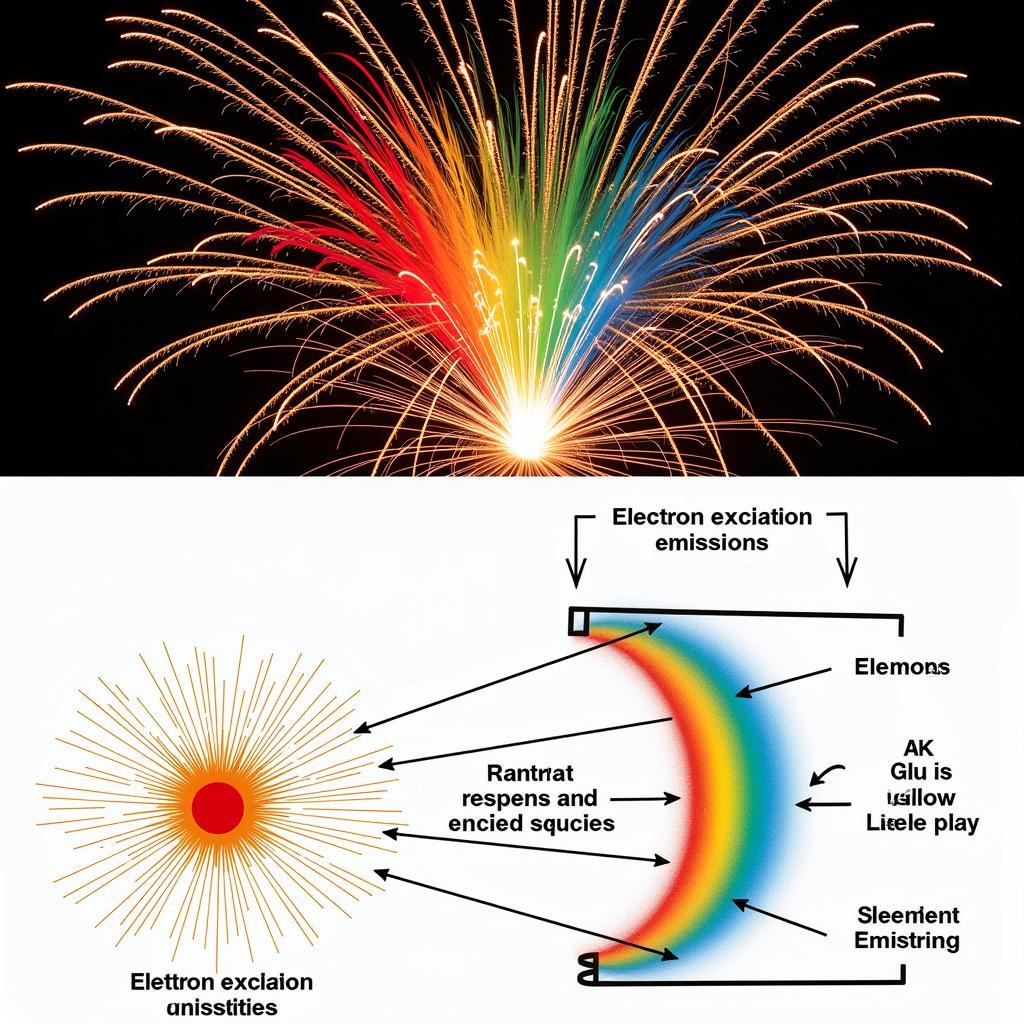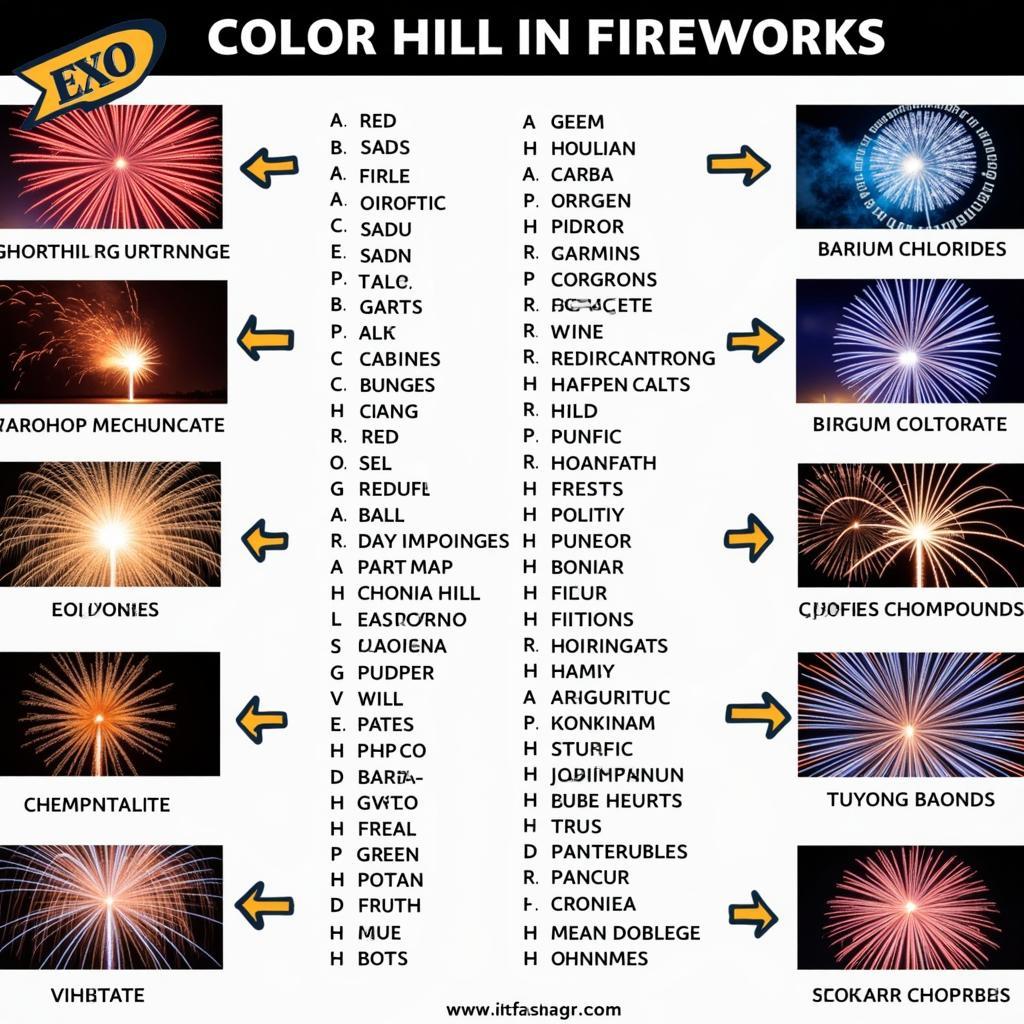Fireworks light up the night sky in a breathtaking array of colors, creating a magical spectacle that captivates audiences of all ages. But have you ever stopped to wonder why fireworks have different colors? The vibrant hues aren’t just random; they’re the result of a fascinating interplay of science and artistry. This article delves into the chemistry behind these dazzling displays, exploring the elements and compounds that create the stunning spectrum of colors we see. You’ll find out which elements create the brilliant reds, vibrant greens, and deep blues, and learn how these colorful explosions are carefully crafted to produce such awe-inspiring shows. Discover the secrets behind the colorful bursts and learn how different chemicals contribute to this amazing spectacle. We’ll explore everything from the basic principles of pyrotechnics to the intricate chemical reactions that produce those mesmerizing displays.
Fireworks owe their vibrant colors to a carefully selected blend of metal-containing salts and other chemical compounds. When these substances are heated to high temperatures, their electrons become energized and jump to higher energy levels. As the electrons fall back to their original state, they emit light of specific wavelengths, creating the colors we see. This is a fundamental principle of physics known as atomic emission. The specific color emitted depends on the type of metal present in the firework.
 Firework Color Explosion Chemistry
Firework Color Explosion Chemistry
What Elements Create Specific Firework Colors?
Different metal salts produce different colors. For example, strontium salts produce a brilliant red, barium salts create a vibrant green, and copper compounds give a rich blue. This principle allows pyrotechnicians to carefully orchestrate the color sequences and patterns in a firework display. Let’s explore a few examples of how specific elements contribute to the firework’s color palette. If you’re curious about the color produced by burning copper, you can find more information at what color does copper burn.
- Red: Strontium carbonate is the key ingredient for creating the vibrant reds seen in many fireworks displays.
- Orange: Calcium chloride is often used to produce the warm orange hues that add depth and richness to firework shows.
- Yellow: Sodium nitrate is the primary ingredient for generating the bright yellows that illuminate the night sky.
- Green: Barium chloride is responsible for the dazzling greens that create a striking contrast against the other colors.
- Blue: Copper(I) chloride is essential for achieving the rich blues that are often seen in elaborate firework displays.
- Violet: A combination of strontium carbonate and copper(I) chloride creates the mesmerizing violet hues that add a touch of magic to firework shows.
 Firework Chemical Composition Color Chart
Firework Chemical Composition Color Chart
Why Do Chemicals Have to Be Heated to Emit Color?
The reason chemicals need to be heated to emit color lies in the science of atomic emission. When heated, the electrons in the atoms absorb energy and jump to a higher energy level. As these excited electrons return to their original, lower energy state, they release the absorbed energy as light. The specific wavelength of light emitted, and therefore the color we see, is determined by the type of element and the energy difference between the excited and ground states of its electrons. For further insights into this process, you can explore the topic of why chemicals need to be heated to emit color at why do chemicals have to be heated to emit color.
How Are Fireworks Designed and Manufactured?
The creation of fireworks is a meticulous process that blends art and science. Pyrotechnicians carefully select the chemical compounds to achieve the desired colors and effects. The chemicals are then packed into shells or other containers, along with a fuse and a bursting charge. The bursting charge is designed to ignite the firework at a specific altitude, creating the spectacular aerial displays we enjoy. The arrangement of the chemicals within the firework determines the pattern and timing of the explosions, leading to a carefully choreographed display of light and color.
“The design and manufacturing of fireworks require a deep understanding of chemistry and physics,” explains Dr. Emily Carter, a leading pyrotechnic chemist. “It’s a precise process that involves careful calculations and meticulous attention to detail.”
What Makes Fireworks So Bright?
The intense brightness of fireworks is due to the rapid release of energy during the chemical reactions. The high temperatures generated by the explosion cause the metal salts to emit light with high intensity, resulting in the brilliant colors that illuminate the night sky. “The brightness of a firework is a direct result of the speed and energy of the chemical reactions involved,” adds Dr. Carter. “The faster the reaction, the brighter the light emitted.” You might be interested in learning more about the specific color emitted by lithium chloride when it burns by visiting what color does lithium chloride burn. For further insight into the diverse colors of fireworks, you can also explore why are fireworks different colors.
Conclusion
The vibrant colors of fireworks are a testament to the power of chemistry. By carefully selecting and combining different metal salts, pyrotechnicians are able to create stunning displays that captivate and inspire. Understanding the science behind these colorful explosions allows us to appreciate the artistry and skill involved in creating these breathtaking spectacles. So, the next time you watch a firework display, remember the intricate chemical reactions that are responsible for the dazzling colors that paint the night sky.
FAQ
- What chemicals make fireworks explode? A combination of a fuel source, an oxidizer, and a stabilizer.
- Are all firework colors created by metal salts? Mostly, yes. Different metals produce different colors.
- What makes fireworks make noise? The rapid expansion of gases created by the explosion.
- How high do fireworks go? Depending on the type, they can reach hundreds of feet.
- Are fireworks dangerous? Yes, they can be dangerous if not handled properly.
- Why are some fireworks louder than others? The amount of explosive powder and the design of the shell.
- How are firework colors mixed? Different chemical compounds are layered within the firework shell.
You might also be interested in understanding the factors contributing to variations in fur color. Check out this informative resource on what causes different fur colors answer key.
For any assistance or inquiries about color and design, feel free to reach out to us. Contact us at 0373298888 or email [email protected]. You can also visit our office located at 86 Cau Giay, Hanoi. Our customer service team is available 24/7.

